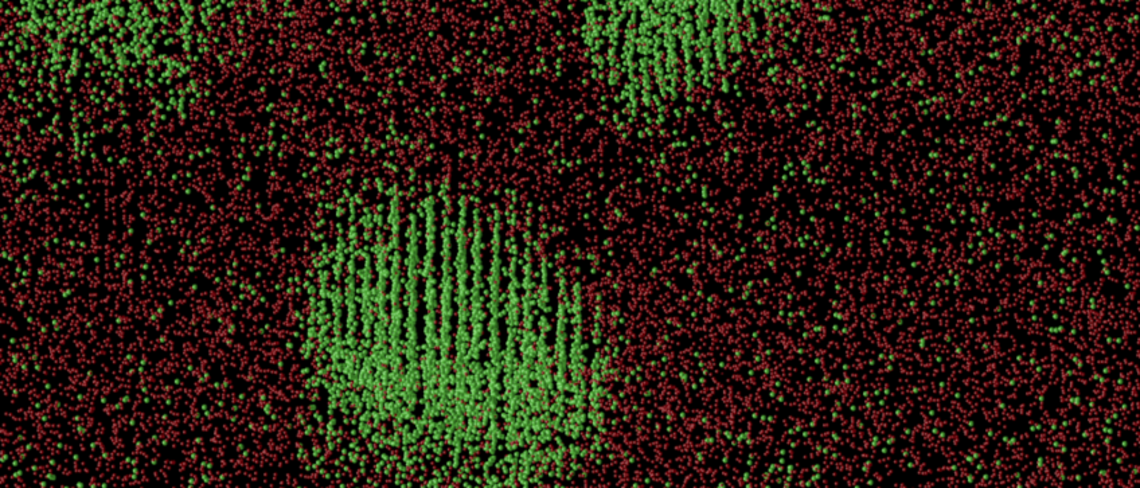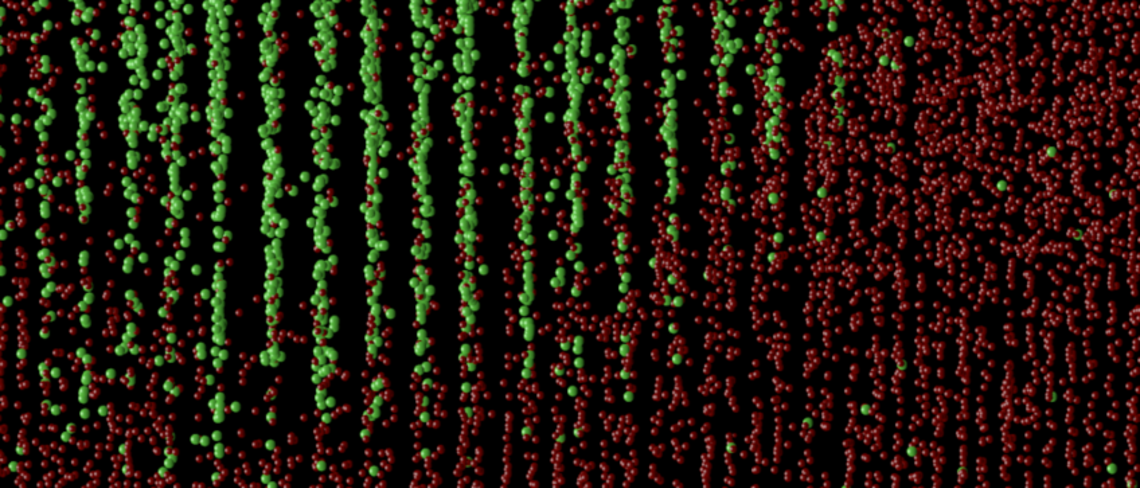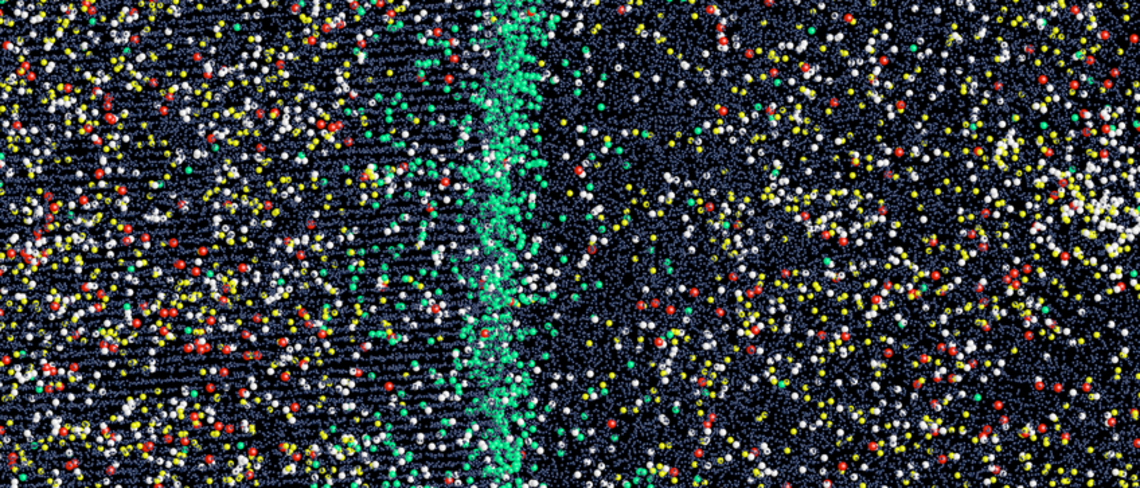1. Structure and plasticity of materials
Spokesperson: Dierk Raabe (MPI for Iron Research)
Co-spokespersons: Jörg Neugebauer (MPI for Iron Research), Claudia Draxl (Humboldt University/Fritz Haber Institute), Matthias Scheffler, Luca Ghiringhelli (Fritz Haber Institute), Markus Rampp (MP Computing and Data Facility), Hermann Lederer (Max Planck Computing and Data Facility).
The plasticity, i.e. the inelastic and permanent shape change of materials, specifically of metallic alloys, can be controlled by alloying, i.e. through the addition of other atoms. Most currently used metallic alloys contain a relatively small total alloying content, typically below about 10 atomic percent. Yet, a number of very prominent alloys systems also exist where very high alloying fractions are used, reaching up to 30%. Examples of such alloy classes are certain types of stainless steels and invar alloys or the so called superalloys which are used under extreme environmentally harsh conditions such as in aeroplane turbines which operate close to the materials’ melting points. Even more extreme alloying scenarios exist in the so-called high entropy alloys, where the conventional alloy design concept of using one primary matrix element (such as Fe, Al, Ti) has been dropped and equimolar or near equimolar compositions are used, producing in part extremely good mechanical properties.
The established approach to describe and model plasticity of such materials is based on the understanding of the solid-enriched atomic structure and its effects, on the multiplication and dynamics of dislocations as well as their interactions with internal interfaces and other phases. Macroscopically visible plastic flow occurs when the dislocations, which each carry a shear of only one atomic distance, create percolative and permanent shear deformation of the sample. The models are strongly parametrized and descriptive, but often not sufficiently predictive.
The big-data concept that we plan to explore differs in general from the established approaches. We will neither start from an assumed atomic structure nor from modeling the dislocation dynamics. In contrast, we start from an enormous amount of information and then use novel tools, based on compressed sensing, to find “correlations” between microscopic quantities of the material and the observed plasticity features. The microscopic information will be e.g. the concentrations of atoms in the sample, electronic properties of the free atoms (energies and wave functions) and small clusters, and atomic-structure information as provided by atom probe tomography (APT). The information content of the APT measurements is enormous. This method provides in one single experiment information about up to 1 billion atoms including their local chemical environment, all details associated with the interactions between solutes and the lattice defects described above and even crystallographic features in certain cases. Our study will extract much more information from APT than just this visible structure.
The individual projects are the following:
1.1. Development of efficient computational and visualization methods - Hermann Lederer, Markus Rampp (MP Computing and Data Facility)
1.2. From billion data points to materials micro structure - Jörg Neugebauer (MPI for Iron Research)
1.3. Pattern recognition, structural similarity and materials maps - Claudia Draxl (Humboldt University/Fritz Haber Institute)
1.4. Structure and composition from billion atom tomography data sets - Dierk Raabe, Baptiste Gault (MPI for Iron Research)
1.5. Atomic structure identification from incomplete atom-probe experimental data - Matthias Scheffler, Luca Ghiringhelli (Fritz Haber Institute)
1.6. Automatic classification and feature extraction from multidimensional STEM data - Christoph Freysoldt, Christian Liebscher (MPI for Iron Research), Luca Ghiringhelli (Fritz Haber Institute)


